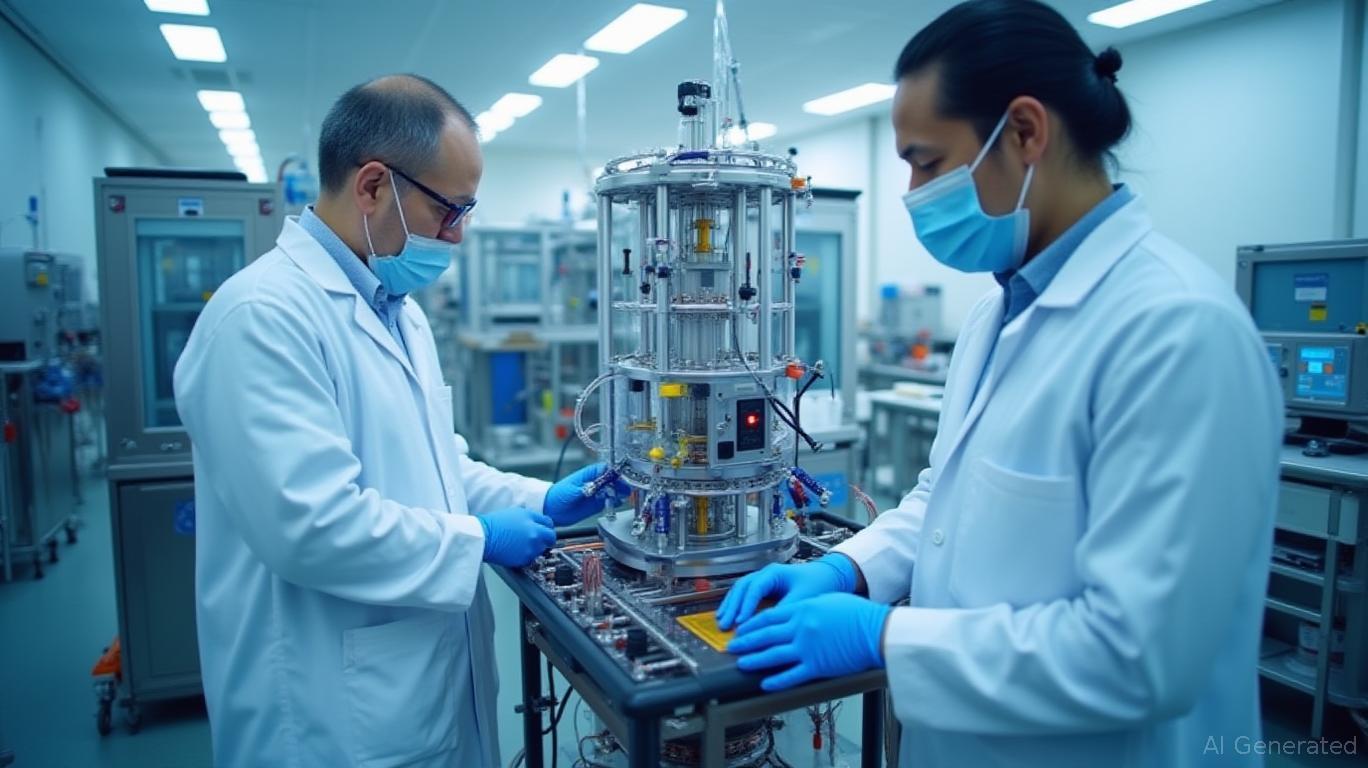Oxford Instruments PLC: Navigating Strategic Pivots and Margin Gains in a Volatile Landscape
Oxford Instruments PLC (OXINF), a global leader in scientific instrumentation and advanced materials, has embarked on a transformative strategic pivot to address geopolitical headwinds and optimize capital allocation. Amidst currency volatility and sector-specific challenges, the company's focus on high-margin segments, operational efficiency, and disciplined capital returns positions it as a resilient player in the advanced technology space. Let's dissect its strategic moves and assess its investment potential.
The Strategic Pivot: Shifting Markets and Capital Priorities
Oxford Instruments' recent moves reflect a clear reallocation of resources toward sectors with stronger growth and margin profiles. Key actions include:
- Geographic Rebalancing:
The company has redirected its China strategy to avoid risks tied to UK export restrictions, which slashed Chinese revenue by 14.7% in FY2024. By pivoting to non-sensitive markets in China and expanding in Asia (excluding China), Europe, and the U.S., is reducing exposure to geopolitical friction. For instance, U.S. revenue surged 30% in constant currency (CC) in FY2025, driven by quantum computing and semiconductor tools.

Asset Sale and Capital Return:
The binding agreement to sell its NanoScience quantum computing division for £60 million (with up to £3 million contingent on performance) is a bold move. Proceeds will fund a £50 million share buyback and support a progressive dividend policy, now yielding a 6.7% increase to 22.2p per share. This reflects confidence in cash flow stability and the strategic benefits of focusing on core businesses like its Advanced Technologies (AT) and Imaging & Analysis (I&A) divisions.Operational Efficiency:
The £75 million Severn Beach facility—now operational—has driven cost efficiencies, particularly in the AT division's Plasma business. Plasma orders grew 13% CC in FY2025, fueled by demand for compound semiconductor tools. Meanwhile, the I&A division's margin improved to 24.7% (up 60 bps CC), thanks to product mix optimization and overhead reductions.
Margin Expansion: Progress Amid Headwinds
Oxford Instruments' adjusted operating margin stood at 16.4% in FY2025, down slightly from 17.1% in FY2024, but this masks deeper improvements. On a constant currency basis, the margin rose to 17.8%, reflecting operational leverage. Divisional performance highlights:
Advanced Technologies (AT):
AT's margin surged to 4.5% (up from 0.9% in FY2024), driven by higher Plasma volumes and cost discipline. Excluding China and NanoScience, AT revenue grew 29% CC, underscoring its potential as a growth engine.Imaging & Analysis (I&A):
Despite challenges in healthcare/life sciences and an £26 million impairment at its Belfast imaging business, I&A contributed 93% of group profits. Its margin expansion to 24.7% signals resilience in its core markets.
Sector Resilience: Betting on High-Growth Tech
Oxford Instruments' exposure to secular trends in semiconductors and materials science offers long-term upside. Key growth drivers include:
Semiconductor Tooling:
The AT division's Plasma business caters to the booming compound semiconductor industry (e.g., GaN and SiC for EVs and 5G). With global demand for advanced chips expected to grow at 9% CAGR through .27, Oxford Instruments is well-positioned as a supplier of deposition and etching tools.Commercial R&D Spend:
Revenue from commercial applied R&D rose 24% CC, as companies invest in R&D for next-gen materials and quantum technologies. This segment is less cyclical than academic markets, offering stable margins.China Recovery:
While FY2025 China sales were weak, management expects a rebound by FY2026. A post-pivot focus on lower-risk customers could unlock this high-growth market without geopolitical risks.
Challenges and Risks
- Currency Volatility:
A 1% depreciation of the USD against the GBP could reduce FY2026 operating profit by ~£4.4 million. Hedging strategies may mitigate this, but it remains a near-term risk.
Healthcare Sector Weakness:
The I&A division's impairment at Andor Technology highlights risks in life sciences markets. Recovery hinges on stabilizing healthcare budgets and operational turnaround at Belfast.Execution of NanoScience Sale:
The deal's completion by Q3 2026 is critical to unlocking capital for buybacks and margin improvements. Delays could dampen investor sentiment.
Investment Thesis: Buy with a Long-Term Lens
Oxford Instruments' strategic pivot aligns it with high-margin, growth-oriented sectors while reducing exposure to geopolitical and sector-specific risks. Key positives:
Strong Cash Flow:
Free cash flow rose to £31.6 million (up from £13.5 million in FY2024), enabling shareholder returns and flexibility.Margin Leverage:
Excluding one-time charges, margins could expand further as the NanoScience sale closes and operational improvements solidify.Undervalued Multiple:
At a 14.2x FY2025 EV/EBITDA, Oxford trades below its 5-year average of 16.5x, offering upside if margins and China recovery materialize.
Recommendation
Buy, with a 12–18 month horizon. Investors should focus on catalysts like the NanoScience sale completion, China revenue recovery, and margin expansion. Monitor currency risks and healthcare sector trends.
In conclusion, Oxford Instruments' disciplined capital allocation and strategic focus on resilient tech sectors make it a compelling play for investors willing to ride near-term volatility for long-term gains.

Comments
No comments yet